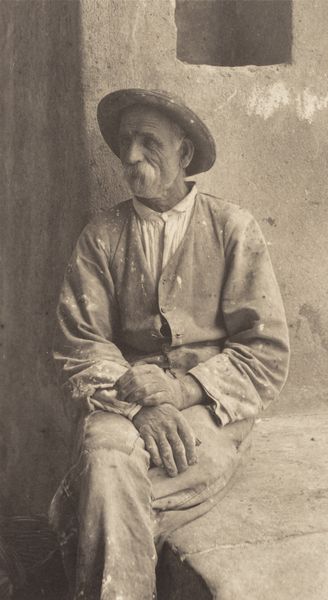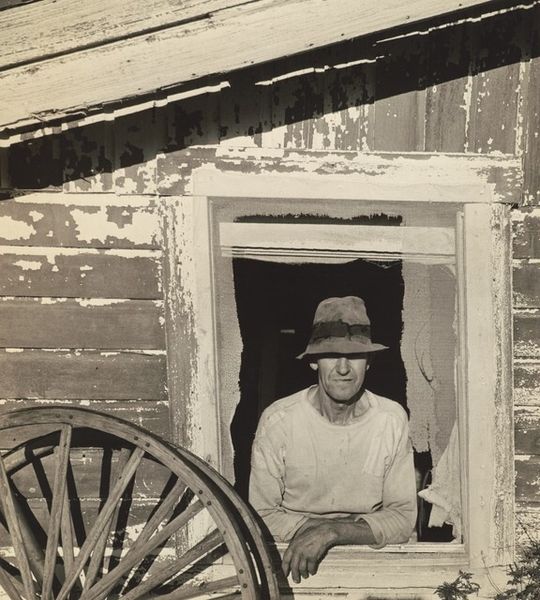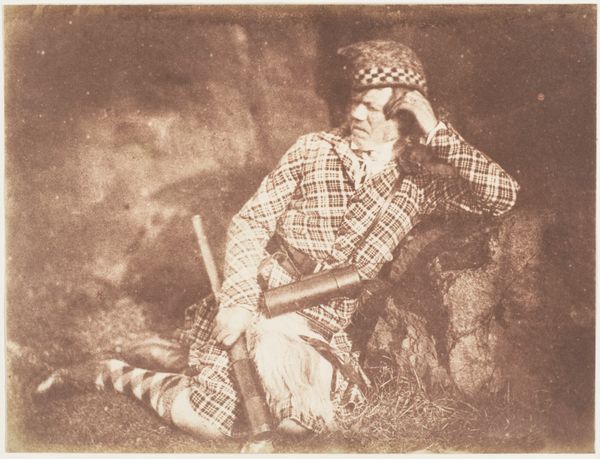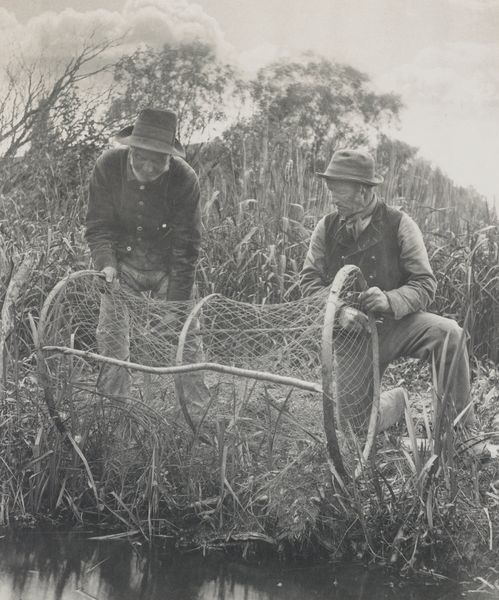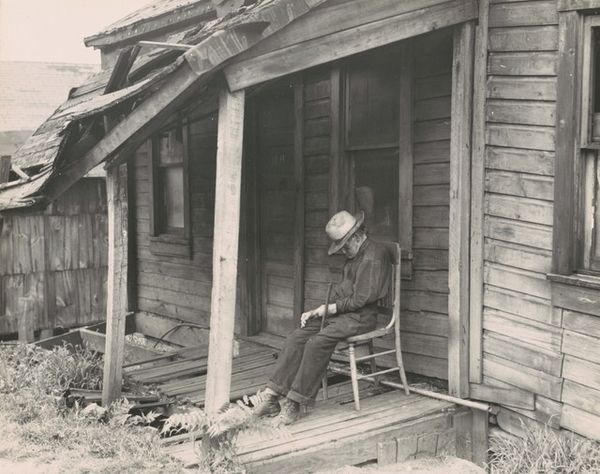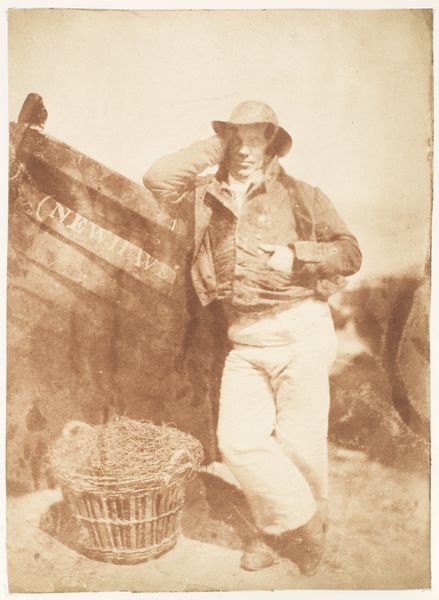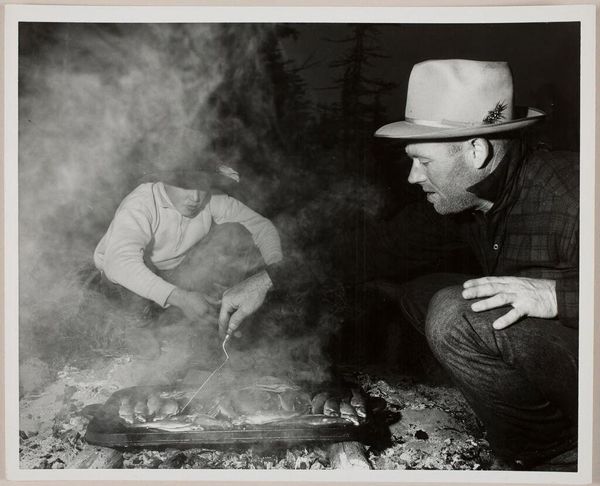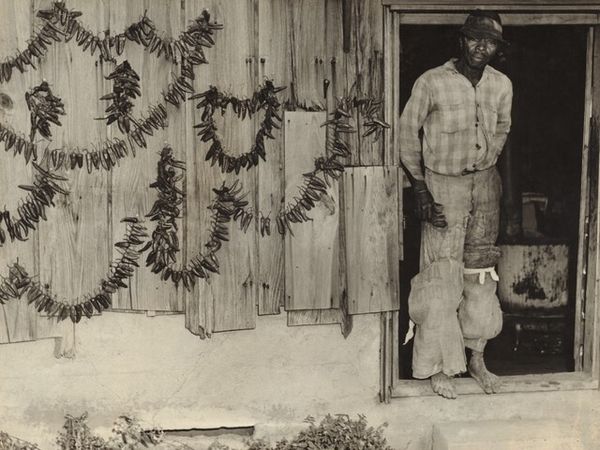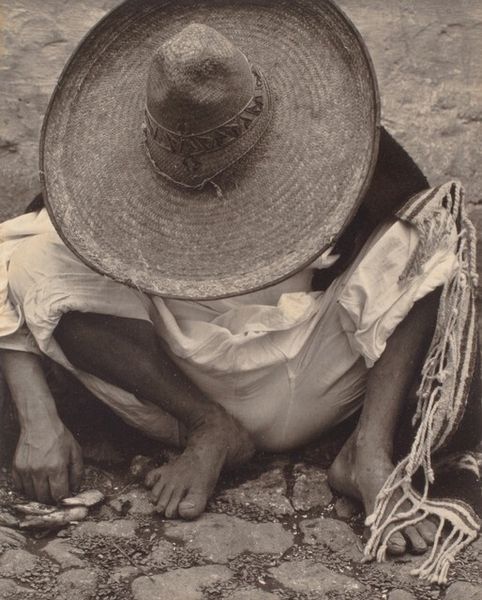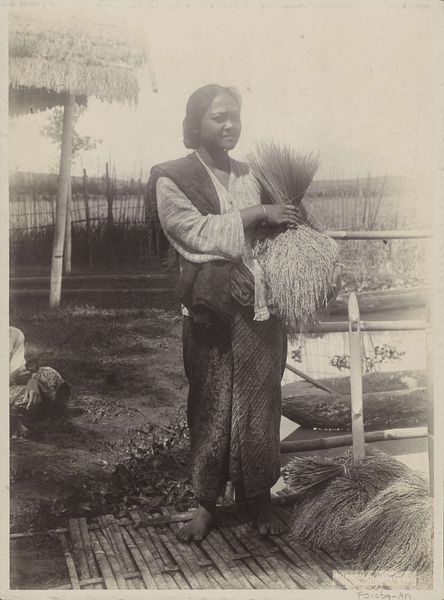
photography, gelatin-silver-print
#
pictorialism
#
landscape
#
photography
#
gelatin-silver-print
#
monochrome photography
#
genre-painting
#
realism
#
monochrome
Dimensions: 24.5 × 29.2 cm (image); 33.3 × 42.5 cm (paper)
Copyright: Public Domain
Curator: Peter Henry Emerson's "The Basket-Maker," a gelatin silver print from 1888 held here at the Art Institute of Chicago, presents us with a striking vision of rural labor. It’s a remarkable example of pictorialist photography from that period. Editor: My first impression is one of intimacy and tranquility. The limited tonal range creates a gentle atmosphere, drawing you in close to witness the craft unfolding. It feels timeless, a window into a way of life both simple and demanding. Curator: Precisely. Emerson sought to capture the authentic rural experience, moving away from staged studio portraits towards images of daily life in the countryside. This work reflects his belief in "naturalistic" photography. Look at the subject's downcast gaze and the textures, the hat and rugged attire, evoking a real working person absorbed in this meticulous labor. The monochrome lends itself to an understanding of timelessness in genre paintings. Editor: I find myself contemplating the basket itself. Woven from simple materials, it speaks volumes about resourcefulness and the human connection to the land. It's also interesting how this image, by romanticizing the everyday existence of agricultural workers, played a role in the wider discussion and evolving definitions of social realism and the picturesque in the late 19th century. Was Emerson making a comment on industrialization and its cultural memory? Curator: That is a crucial point. One could see it as a nostalgic vision. But the choice of this medium, photography, to document what Emerson believed to be disappearing lifestyles gives a new cultural importance. These photographs offered viewers a way to connect with rural life as industrialism marched onwards, embedding social narratives. Editor: Considering this work today, I think it makes you meditate on the relationship between humans and the materials of nature, even though it carries the risk of turning human labor into idealised imagery. Curator: Absolutely, the symbols are very potent: the cyclical creation and resourcefulness. "The Basket-Maker" gives form to something essential, linking tradition with community. Editor: It's easy to see the powerful presence of historical art as a window, both beautiful and politically charged, opening dialogue with generations past. Curator: Yes, "The Basket-Maker" becomes a study of life, captured during rapid social shifts, carrying multiple layers of symbol and significance that reach far beyond a simple picturesque scene.
Comments
No comments
Be the first to comment and join the conversation on the ultimate creative platform.
